At some point over the long course of its evolution, the Prothonotary Warbler (Protonotaria citrea) developed the peculiar habit of staring at its reflected image in the still waters of the swamps that it calls home. This mirror gazing does nothing to advance either of the bird’s main aims in life, which are to eat and reproduce. We have to assume that the Prothonotary, like many of its human admirers, is subject to the vice of vanity. Like Narcissus in the ancient myth, this warbler is infatuated with its own reflection.
But how is it possible to fall in love with something so insubstantial? A reflection, after all, is nothing more than a visual echo. The myth itself confirms this definition, since the nymph Echo was the would-be lover of the impossibly handsome youth Narcissus. In a way, those two were made for each other, because they both embodied the notion of repetition. Just as a reflection is a visible echo, so is an echo an audible reflection. Repeat after me: What Narcissus’ reflection was to the eye, Echo’s voice is to the ear: a mere reminder of the real thing. Their failure to unite themselves in an act of love reflected their separate inabilities to transcend their physical limits.
Just think of the moment when, according to the poet Ovid, Narcissus was so frustrated by his inability to embrace his watery image, that he cried out in despair, “I wish to leave my own body!” And think of Echo, who, unable to express her own desires, could only repeat what others had said. Both were trapped: by their bodies, by their fate.
Which brings us back, by what Joyce would have called “a commodious vicus of recirculation,” to the Prothonotary itself. Far from wasting away like Narcissus, this warbler appears to be one of the most carefree of all the birds. Catching sight of its own beautiful form in the water of a pond or slough only seems to increase its happiness. The bird snatches an insect from a piece of rotting wood, then flies to another perch where it can regard itself again and announce its satisfaction in song.
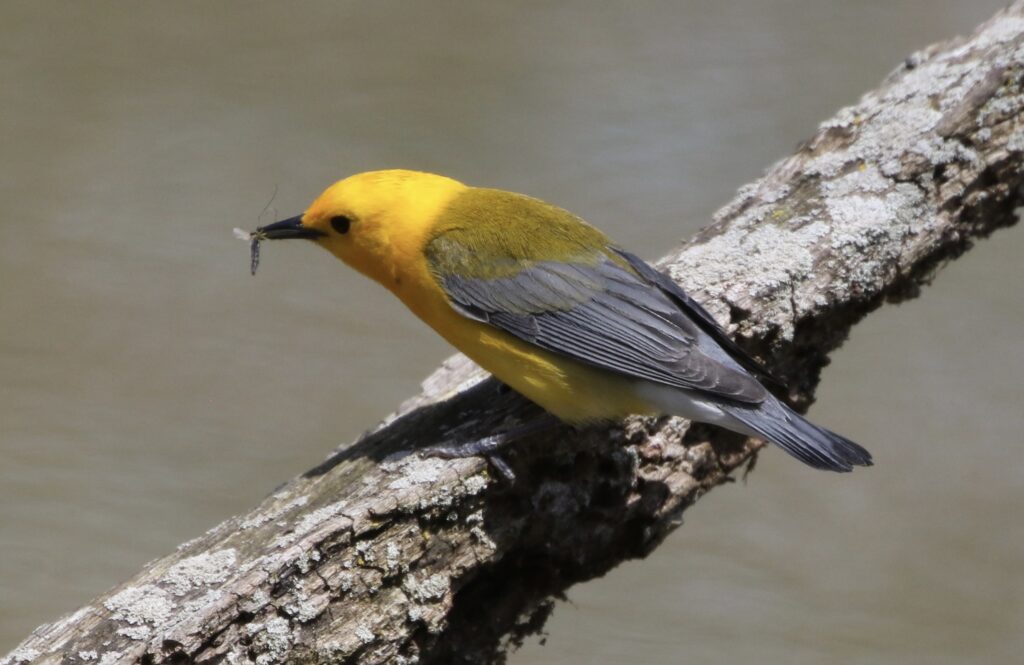
What makes the Prothonotary so special, both in its own eyes and in those of its many admirers? Color, of course. When it comes to birds, color is always the deciding factor, isn’t it? And not just the pure gold of the Prothonotary’s body and the dark blue of its wings. This is one of those birds, like the Ivory Gull and the Scarlet Tanager, whose colors are so intensely vivid that they seem to glow. This effect gives the bird the appearance of being in constant motion. Even at rest, it seems to quiver in its stillness.
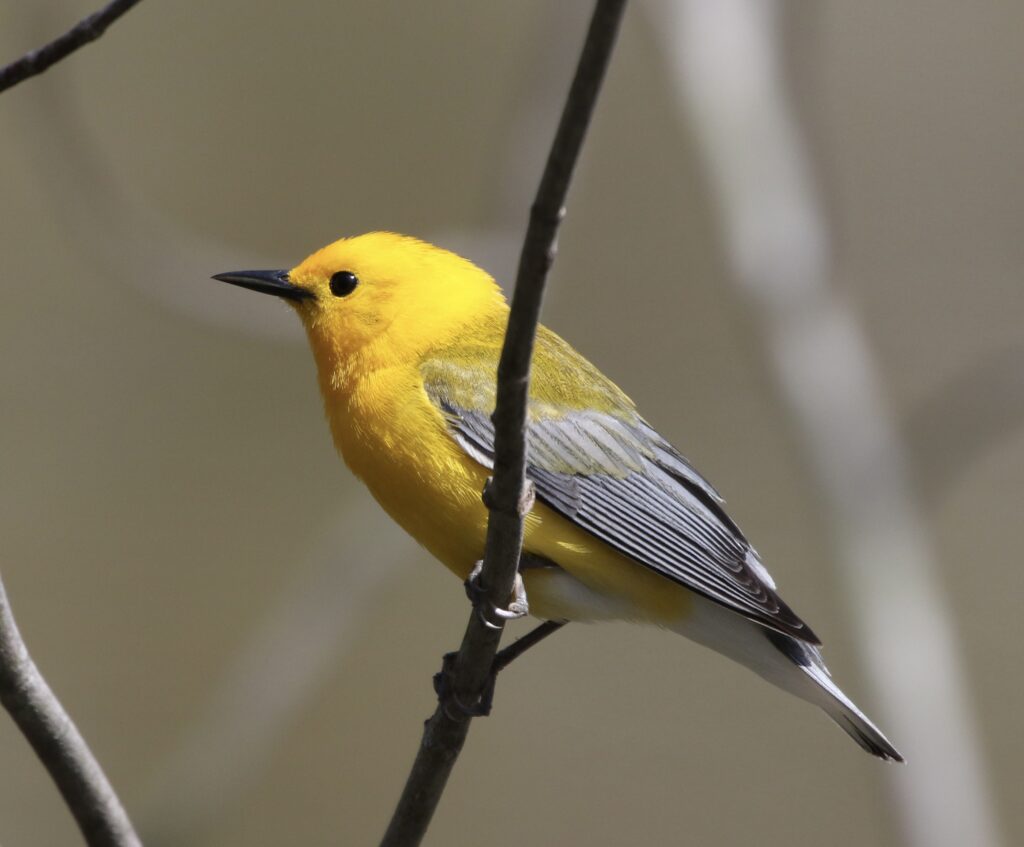
To get an idea of what I’m talking about, just compare the Prothonotary with its distant cousin the Yellow Warbler (Setophaga petechia). The Yellow is a nice enough bird, a pretty little thing considered on its own, but it’s not on fire like the Prothonotary. There is something very matte about the Yellow’s plumage, something that lacks the luster of the Prothonotary’s saffron robes.
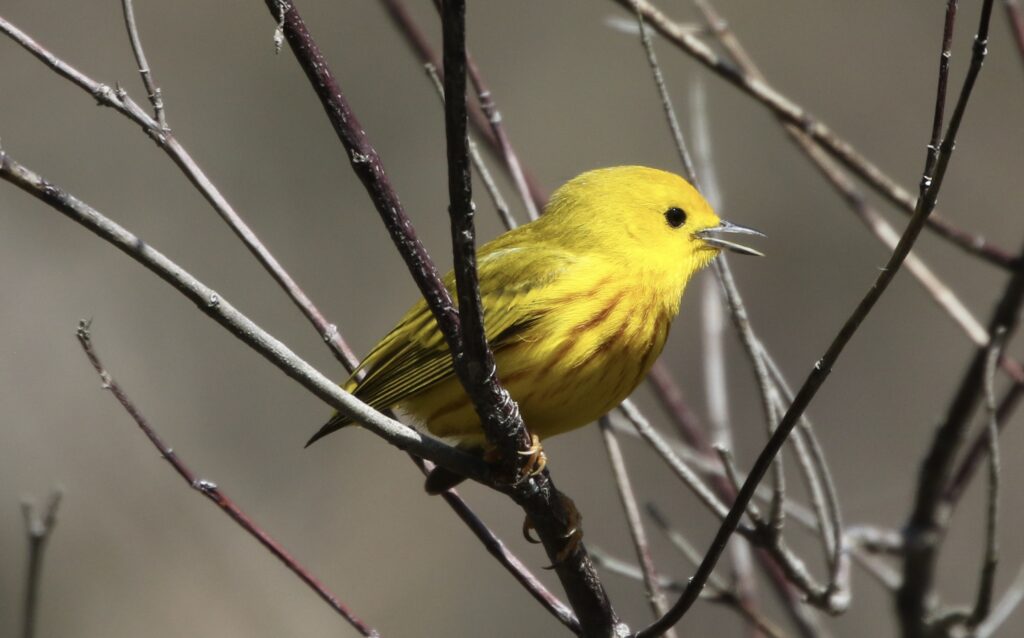
At the end of the nineteenth century, the French writer André Gide felt compelled to re-imagine the myth of Narcissus, to make it fresh for the people of his time. In doing so, he took on the role of Echo in the ancient story. Not only was he the would-be lover of Narcissus, whom he described as parfaitement beau, but he was repeating a tale that had been told many times before. “Everything has been said already,” Gide observed. “But since nobody was listening, we have to tell it again.”
For Gide, Narcissus staring at his own reflection was a symbol or figure of the poet. And the poet? “He’s the one who looks. And what he sees is paradise, because paradise is everywhere.” Maybe this is why I’m willing to forgive the Prothonotary the vice of its vanity, which normally I find intolerable in anyone but myself. If only we, like the bird, could catch a glimpse in our own reflection of the heaven that surrounds and sustains us.
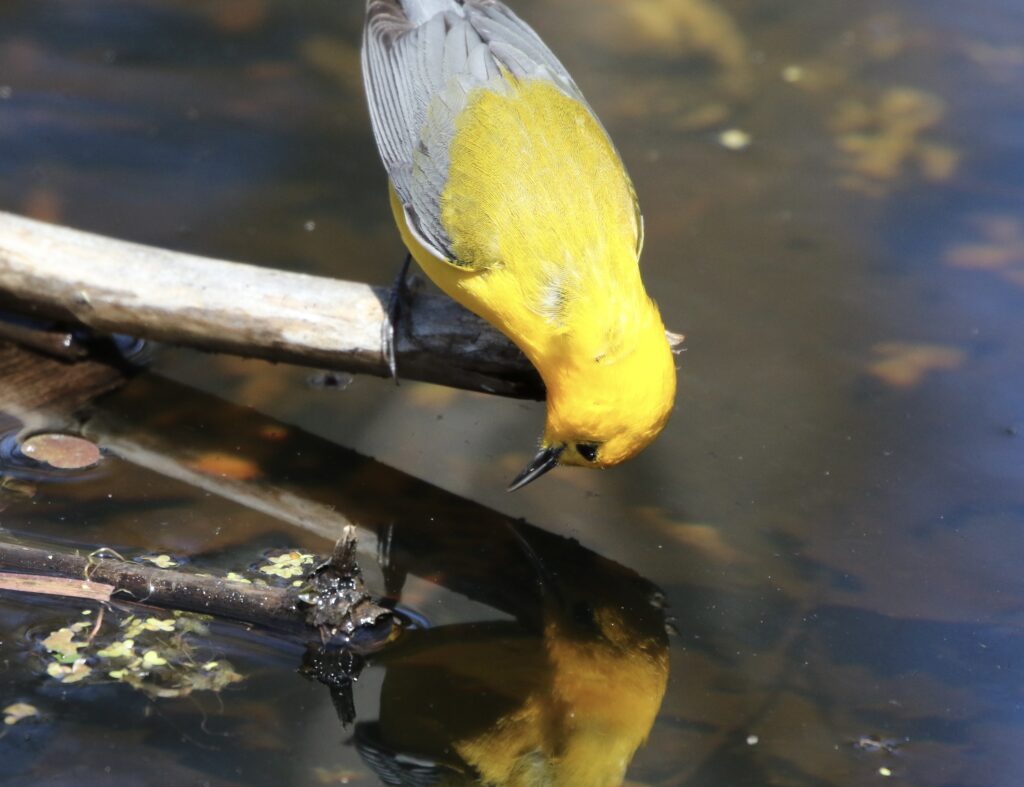
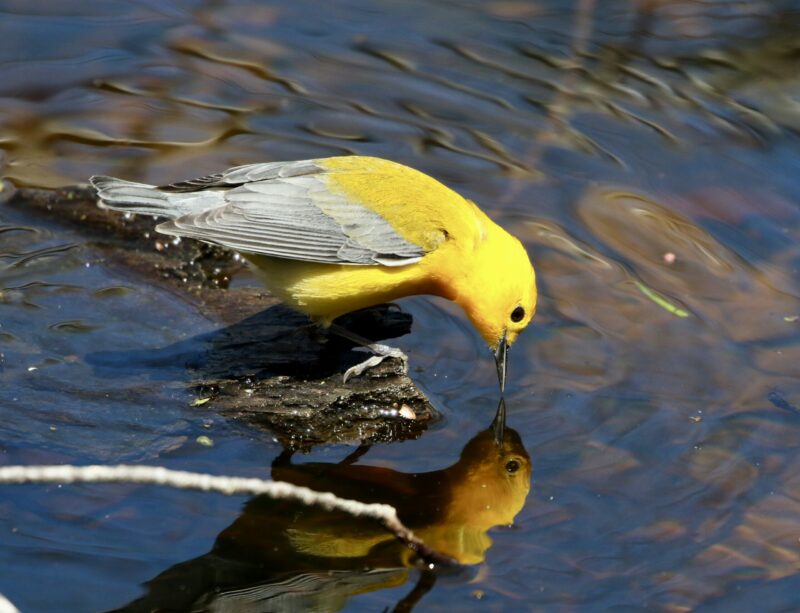
Enjoyed this Ed
Good to hear from you, Mike–and nice to know that you enjoyed this photo essay.
Such a fascinating and beautifully written essay. Thanks, Ed, for introducing me to a bird I had not heard of. Is it the same as the Nashville Warbler?
Thank you, Kim–I’m very glad you enjoyed the piece. The Nashville Warbler is a different bird–it has sort of a greyish head and a noticeable eyering.
I think this is my favourite of all your wonderful essays, Ed!